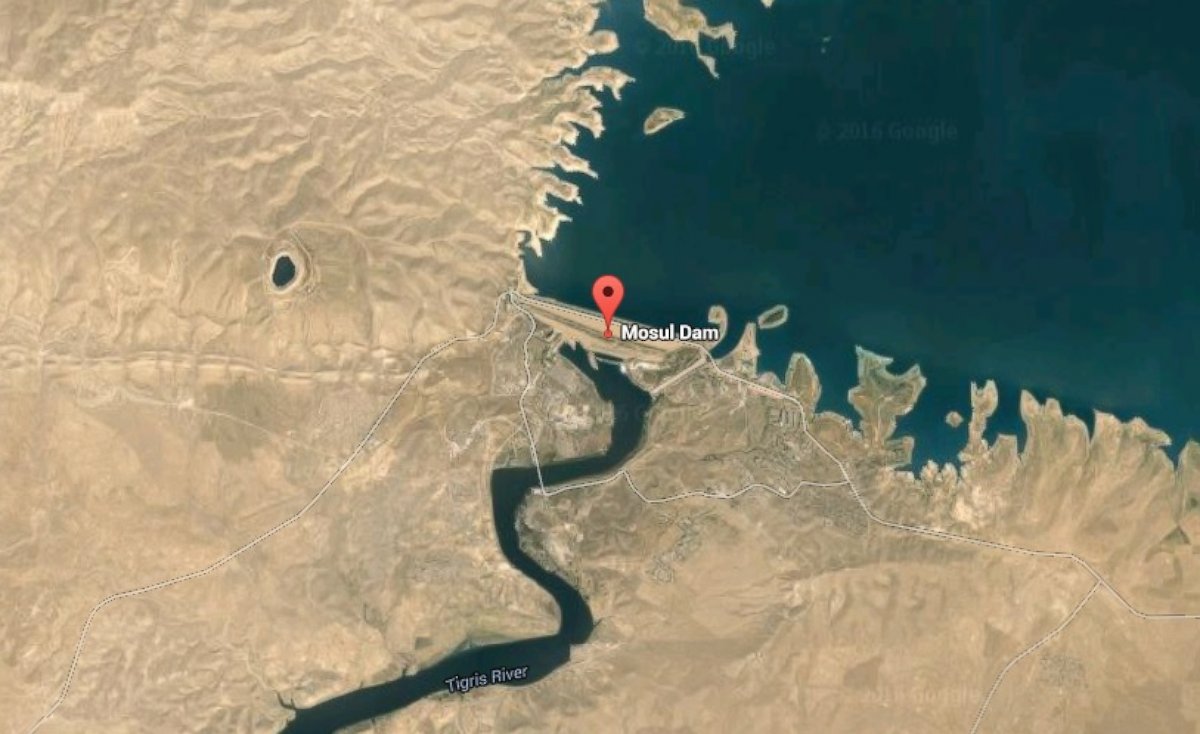'Catastrophic': US Raises Alarm Over Perilous Mosul Dam
US previously described massive structure as "most dangerous dam in the world."
— -- The U.S. Ambassador to the United Nations today left a “chilling” briefing about the danger posed by Iraq’s Mosul Dam and called on the international community to realize the “magnitude of the problem and the importance of readiness to prevent a humanitarian catastrophe of epic proportions.”
The briefing from geotechnical experts said the dam, already described nearly a decade ago as the “most dangerous dam in the world,” now faces a “serious and unprecedented risk of catastrophic failure with little warning."
The Mosul Dam lies approximately 30 miles north of Iraq’s second-largest city of Mosul and has been a danger ever since it was constructed in the mid-1980s on unstable foundation. But officials fear that in recent years the problem has gotten much worse as the terror group ISIS was able to temporarily take control of the dam and may have interfered with the constant, massive grouting operation that is necessary to keep the dam functional -- though an Iraqi official told ABC News in 2014 that the work continued, even under ISIS control.
In a worst case scenario, should the dam breach, it could send a flood wave several stories high into Mosul and inundate cities with devastating effect as far down the Tigris as Baghdad, more than 200 miles away, according to a 2007 warning letter from top U.S. officials to the Iraqi government and contemporary estimates by experts.

“While important steps have been taken to address a potential breach, the dam could still fail,” U.S. Ambassador to the U.N. Samantha Power said today in a written statement. “In the event of a breach, there is the potential in some places for a flood wave up to 14 meters [46 feet] high that could sweep up everything in its path, including people, cars, unexploded ordnance, waste and other hazardous material, further endangering massive population centers that lie in the flood path... We all must intensify our efforts to ensure that urgently-needed repair work is undertaken as soon as possible and that people across Iraq understand the risks and the best evacuation routes.”
Last week, the U.S. Embassy in Baghdad issued a “security message” that noted that while officials did not have “specific information that indicates when a breach might occur,” it advised Americans in the potential danger zone to have an evacuation plan ready.
The day after the security message was sent out, an Italian company, Trevi, announced that it had agreed to intervene and fix the dam for $300 million, but it won’t be easy.
“These are huge and very sophisticated repairs. It’s not like going to Home Depot and grabbing some paint and caulk,” a geotechnical expert, who previously worked on the dam, told ABC News.
The expert said he foresaw a few months before meaningful repairs would begin. In the meantime, as to when the dam could fail, he said, it “could be tomorrow, could be next week, could be 10 years-time.”